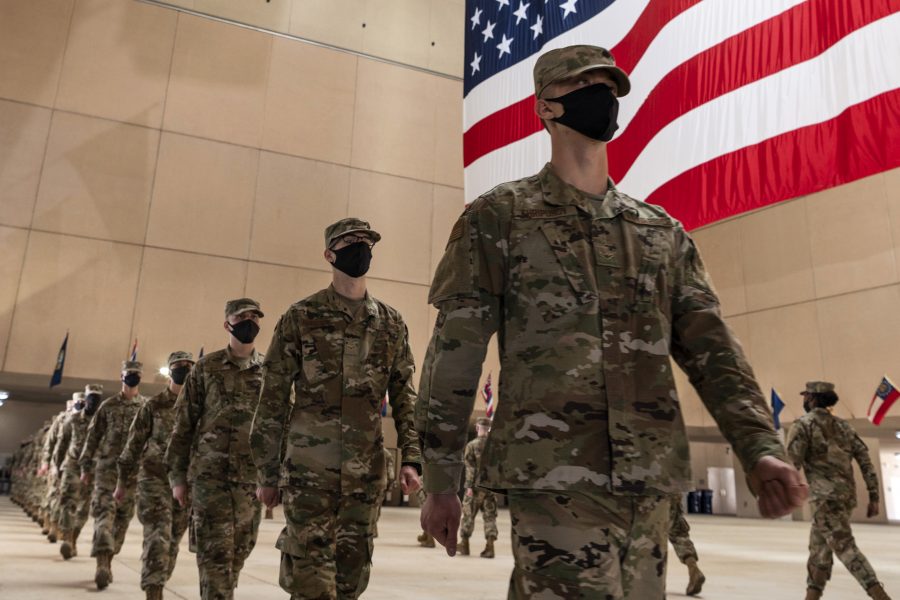The Air Force is relying on testing early and often to curb the new coronavirus’s spread at Basic Military Training, even as the majority of recruits who test positive are asymptomatic.
About 200 Airmen in BMT have tested positive for the new coronavirus in the past four months, totaling around 2 percent of the Air Force’s BMT recruits, 2nd Air Force Commander Maj. Gen. Andrea D. Tullos said during a July 10 Pentagon briefing.
Joint Base San Antonio-Lackland, Texas, the main BMT location, has trained 8,700 recruits since mid-March. Each are checked for the virus upon arrival and regularly throughout boot camp, and isolated if they test positive, Tullos said. The Air Force has found most COVID-19 cases in BMT through proactive testing when recruits arrive.
Sixty percent of those who tested positive showed no symptoms while infected, a staggering number compared to the Army, which reported just 1.8 percent of asymptomatic cases among basic combat trainees. All infected Airmen have returned to training without needing hospitalization. Most have completed basic training so far.
The vast majority of cases have occurred at Lackland, which until this year had been the lone USAF boot camp site since 1968. A Keesler Air Force Base, Miss., spokesman said the installation has seen one case since it began hosting basic training due to the pandemic.
Keesler’s first formal flight of trainees graduated July 10, and the base will continue bringing in 60 recruits a week through Sept. 29. While Keesler will continue to host BMT through the end of September, the Air Force hasn’t yet decided whether to keep it running at the satellite location in fiscal 2021.
Splitting BMT between Lackland and Keesler has “successfully reduced the stress on Lackland infrastructure while maintaining quality training and enabling us to sustain our production goals,” Tullos said. The Air Force initially shrank its training pipeline to graduate about 60 percent of the students that it would in a typical year, hoping that having smaller cohorts would let people spread out and deep clean more easily. It has since ramped back up to more than 90 percent of its usual student output.
“We started at 38,000, we’re down around [35,500], but … we are actually retaining above historic norms,” Tullos said. “We are going to actually hit our end-strength ceiling with our current production rate.”
The Air Force is trying to keep an eye on COVID-19 cases by asking recruits to fill out questionnaires about potential symptoms, telling instructors to report any illness they notice, and encouraging Airmen to speak up if they feel sick, Tullos said.
The organization also believes that asymptomatic recruits who never show signs of infection don’t play a major role in spreading the virus. That does not include recruits who may not show symptoms when they test positive but later come down with a cough, fever, or other ailment. Everyone with a positive test result is isolated, even if they are not showing symptoms.
“In the past, … we had a kind of ‘suck it up’ culture, where we wanted you to push through regardless of how you were feeling,” Tullos said. “That is absolutely the opposite of what we’re encouraging right now. We want our trainees to feel comfortable about coming forward if they feel like they have symptoms, so that we can not risk the health of the rest of the flight as well as the cadre, get them treated, and get them back into training as quickly as possible.”
